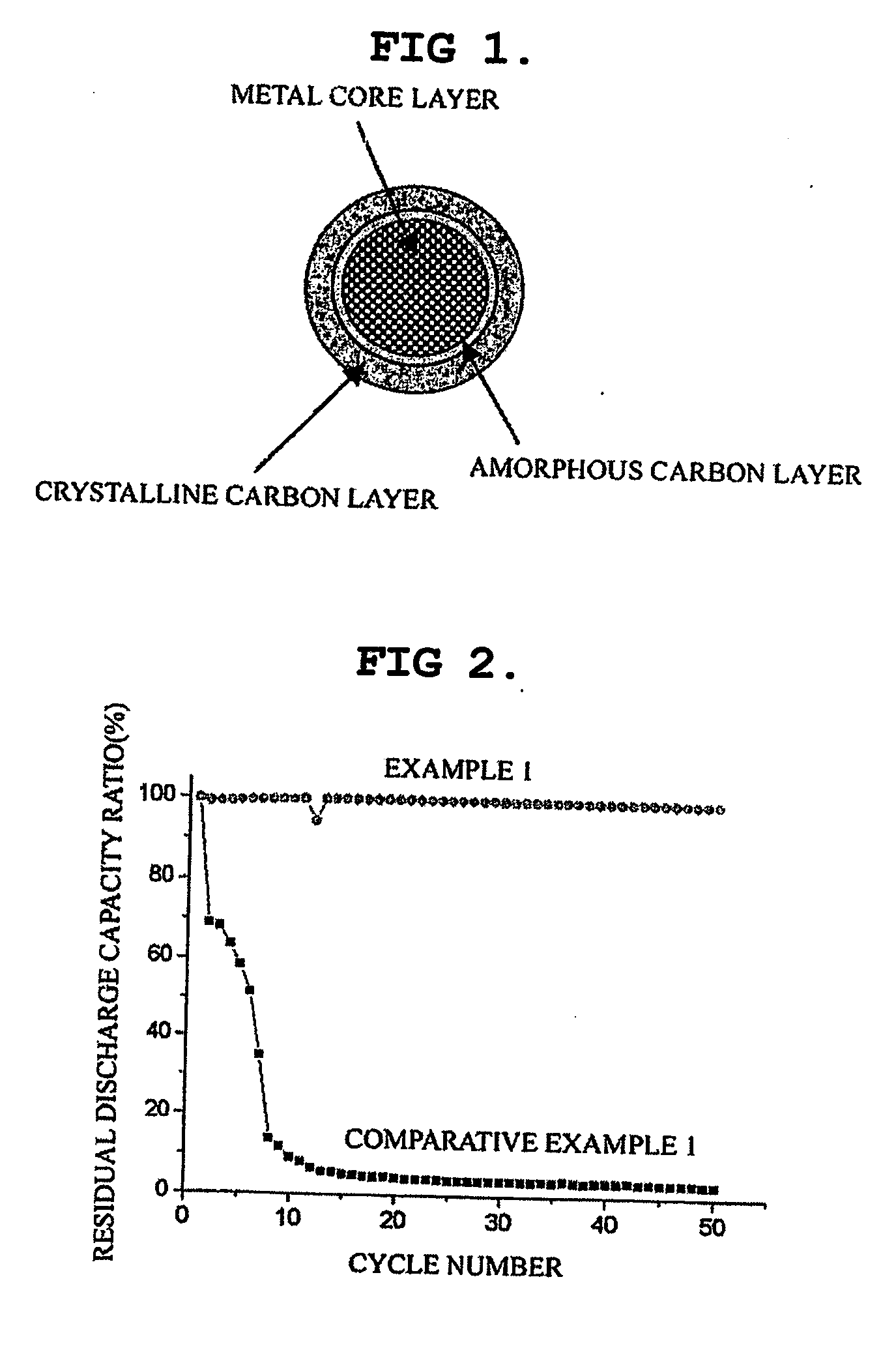Anode material for lithium secondary cell with high capacity
a secondary cell and anode material technology, applied in secondary cell details, cell components, electrochemical generators, etc., can solve the problems of not being used as a practical anode material for a lithium secondary cell, not having sufficient and acceptable cycle life characteristics, and poor cycle life characteristics of lithium cells, etc., to achieve excellent cycle life characteristics and high charge/discharge capacity
- Summary
- Abstract
- Description
- Claims
- Application Information
AI Technical Summary
Benefits of technology
Problems solved by technology
Method used
Image
Examples
example 1
[0048] Natural graphite was mixed with Si in a ratio of 50 wt %:50 wt %. Then, mechanical alloying of the mixture was performed by using a Mechano Fusion device available from Hosokawa Micron Company under a rotation speed of 600 rpm for 30 minutes to obtain an anode material. As shown in FIG. 6, the resultant anode material was composed of a Si metal layer, an amorphous carbon layer and a crystalline carbon layer.
[0049] In order to evaluate the anode material, the anode material powder was mixed with 10 wt % of PVDF as a binder, 10 wt % of acetylene black as a conducting agent and NMP as a solvent to form homogeneous slurry. The slurry was coated on a copper foil, dried, rolled and then punched into a desired size to obtain an anode. A coin type cell was formed by using the anode, a lithium metal electrode as a counter electrode and an electrolyte containing 1 mole of LiPF6 dissolved in EC and EMC.
example 2
[0050] Example 1 was repeated to obtain an anode material and a coin type cell, except that Si was substituted with an alloy having the composition of Si 62 wt %+Co 38% and obtained by a gas atomization method.
PUM
 Login to View More
Login to View More Abstract
Description
Claims
Application Information
 Login to View More
Login to View More - R&D
- Intellectual Property
- Life Sciences
- Materials
- Tech Scout
- Unparalleled Data Quality
- Higher Quality Content
- 60% Fewer Hallucinations
Browse by: Latest US Patents, China's latest patents, Technical Efficacy Thesaurus, Application Domain, Technology Topic, Popular Technical Reports.
© 2025 PatSnap. All rights reserved.Legal|Privacy policy|Modern Slavery Act Transparency Statement|Sitemap|About US| Contact US: help@patsnap.com



